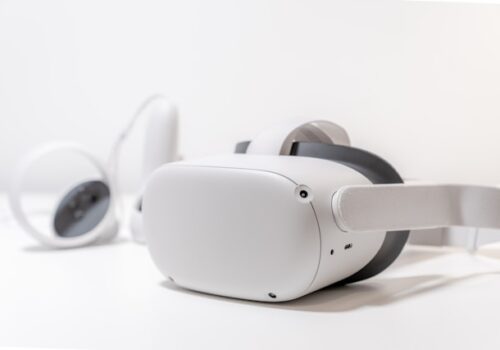Enhancing Security Monitoring with Virtual Reality: The Integration of Axis Cameras and VR Technology
In the rapidly evolving landscape of security technology, the convergence of high-quality surveillance equipment and cutting-edge virtual reality (VR) systems presents exciting possibilities. This article explores the potential integration of Axis security cameras with VR technology, examining how this fusion could revolutionize security monitoring and enhance overall safety measures across various sectors.
The Current State of Axis Security Cameras
Axis Communications has long been at the forefront of network video solutions, offering a wide range of high-performance security cameras. Known for their exceptional image quality, advanced analytics capabilities, and robust network integration, Axis cameras are widely used in diverse environments, from retail spaces to critical infrastructure facilities. Their product line includes everything from discreet indoor cameras to ruggedized outdoor models, all designed to provide comprehensive surveillance coverage.
Virtual Reality: Beyond Gaming and Entertainment
While VR technology has gained significant traction in gaming and entertainment, its potential applications extend far beyond these realms. Industries such as healthcare, education, and manufacturing have already begun to harness VR’s immersive capabilities for training, simulation, and visualization purposes. The security sector, however, remains a largely untapped frontier for VR integration.
The Synergy of VR and Security Cameras
Combining Axis security cameras with VR technology could create a paradigm shift in how security monitoring is conducted. Here are some potential benefits of this integration:
1. Immersive 360-degree Views: VR headsets could provide security personnel with fully immersive, 360-degree views of monitored areas, offering a level of situational awareness that traditional 2D monitors simply cannot match.
2. Enhanced Spatial Awareness: The depth perception provided by VR could help security operators better understand the layout and dimensions of surveilled spaces, potentially improving response times and decision-making in critical situations.
3. Intuitive Multi-camera Navigation: VR interfaces could allow for more natural and intuitive navigation between multiple camera feeds, enabling operators to quickly “move” between different viewpoints within a monitored facility.
4. Remote Presence: VR could enable security personnel to feel as if they are physically present in monitored locations, potentially enhancing their engagement and alertness during long monitoring sessions.
Technical Considerations and Implementation
Integrating Axis cameras with VR systems would require addressing several technical challenges:
1. Video Processing: Axis camera feeds would need to be adapted for VR viewing, potentially requiring additional processing to create stereoscopic 3D images or to stitch together multiple camera feeds into a cohesive virtual environment.
2. Bandwidth and Latency: Streaming high-quality, immersive video to VR headsets would demand significant bandwidth. Minimizing latency would be crucial to prevent disorientation and ensure real-time monitoring capabilities.
3. Hardware Requirements: Security operations centers would need to be equipped with VR-ready computers and headsets, representing a significant investment in new hardware.
4. Software Development: Custom software solutions would be necessary to create intuitive VR interfaces for security monitoring, potentially integrating with existing video management systems (VMS) used with Axis cameras.
Potential Use Cases
The integration of Axis cameras and VR technology could benefit various sectors:
1. Large-scale Event Security: VR monitoring could provide security teams with unprecedented situational awareness at concerts, sports events, or political rallies.
2. Critical Infrastructure Protection: Operators monitoring power plants, water treatment facilities, or transportation hubs could use VR to gain a more immersive understanding of these complex environments.
3. Retail Loss Prevention: VR could enhance the ability of security personnel to monitor large retail spaces, potentially improving shoplifting detection and prevention.
4. Smart City Surveillance: Urban security centers could use VR to navigate through networks of city-wide cameras more intuitively, improving response times to incidents.
Challenges and Limitations
Despite its potential, several challenges must be addressed:
1. Cost: The initial investment in VR hardware and the necessary adaptations to existing camera systems could be substantial.
2. Training: Security personnel would require training to effectively use VR interfaces and to manage the potential disorientation that can occur with prolonged VR use.
3. Ergonomics: Extended use of VR headsets can cause fatigue and discomfort, necessitating careful management of operator schedules and workspace ergonomics.
4. Data Security: The increased data flow and new access points created by VR integration would need robust cybersecurity measures to prevent breaches.
Future Possibilities
Looking ahead, the integration of Axis cameras and VR could pave the way for even more advanced security solutions:
1. AI Integration: Artificial intelligence could be used to automatically highlight potential threats within the VR environment, directing operators’ attention where it’s most needed.
2. Augmented Reality Overlays: AR elements could be incorporated to provide additional information within the VR view, such as identifying registered personnel or flagging unauthorized access attempts.
3. Collaborative Virtual Spaces: Multiple security operators could inhabit the same virtual space, enhancing teamwork and coordination during incident response.
Ethical Considerations
As with any advanced surveillance technology, the integration of VR and security cameras raises important ethical questions. Privacy concerns, the potential for misuse, and the psychological impact on both security personnel and the monitored public must be carefully considered and addressed through policy and governance frameworks.
Conclusion
The integration of Axis security cameras with virtual reality technology represents a promising frontier in security monitoring. While significant technical and practical challenges remain, the potential benefits in terms of enhanced situational awareness, improved response times, and more intuitive security operations are substantial. As both camera technology and VR systems continue to advance, we can expect to see increasingly sophisticated and effective security solutions that leverage the strengths of both technologies.





